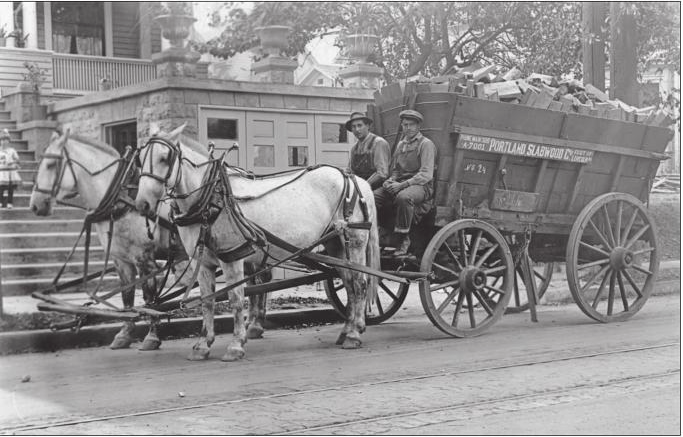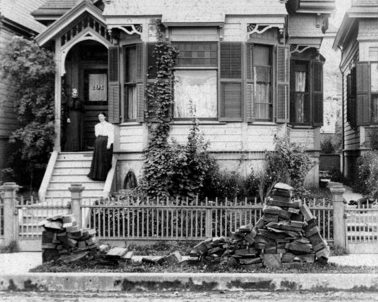
Historic Slabtown Tour
Step into Portland’s working-class past on a journey through one of the city’s most storied neighborhoods. More than just a traditional history tour, the Historic Slabtown Tour is a dynamic exploration of cultural identity, resilience, and transformation—told through the lens of urban planning, citizen resistance, and personal connection.
Grounded in Dr. Tanya March’s dissertation, enriched by oral histories, archival research, and her close friendship with Portland historian Mike Ryerson, this tour offers a fresh perspective on the city’s evolution. Walk the streets with historic photos in hand as you explore the character, complexity, and legacy of a neighborhood that continues to shape Portland’s identity.
Itinerary
-
Start Location: Northwest Library, 2300 NW Thurman St (at NW 23rd Ave)
-
Duration: Approximately 90 minutes
-
Distance: Flat terrain with one optional stair climb
-
Route: From NW 23rd Avenue west along Thurman Street to NW 27th Avenue
Local Historic Highlights
This tour weaves through Slabtown’s layered landscape, where every block holds echoes of industry, innovation, and resistance. Along the way, you’ll encounter sites that tell the deeper story of how Portland’s growth collided with and reshaped a working-class neighborhood. The tour highlights cycles of construction and erasure shaped by forces like streetcar expansion, redlining, freeway projects, urban renewal, and grassroots resistance. Rather than a static preservation story, this tour shows how Slabtown has continually reinvented itself—anchored by the spirit of those who lived and labored here.
-
Vaughn Street Baseball Park (1901-1953): A beloved hub of community life for nearly six decades, Vaughn Street Park was built in 1901 by streetcar magnate Ida B. Fuller to serve a growing Northwest Portland. From the early days of the Portland Webfooters to the 1946 Rosebuds, where Jesse Owens briefly owned a team, the park was a place where affordable entertainment, civic pride, and the spirit of the working class came together in the grandstands.
-
Guilds Lake Courts War Housing (1942-1951): One of Portland’s most overlooked wartime landmarks, the Guilds Lake Courts were a massive federal housing project built during WWII to accommodate workers in the steel mills and nearby defense industries. Unlike other war housing developments, Guilds Lake Courts was the only one in Portland to house Black residents—marking a critical yet often forgotten chapter in the city’s racial and urban history.
A rare remnant of this forgotten community still exists: the original site sign, once standing at the entrance to the Courts, was preserved thanks to the tour operator, who sold it to the McMenamin brothers. Today, it hangs proudly in McMenamins Tavern & Pool on NW 23rd, just blocks from its original location.
-
Entrance to the 1905 Lewis & Clark Centennial Exposition (1905):
While the original entrance no longer stands, this area once welcomed visitors to the Lewis & Clark Centennial Exposition—a massive celebration of westward expansion and industrial growth that drew over 2.5 million attendees to Portland in just four months. Often mistakenly referred to as a “world’s fair,” the event was not officially recognized as one, though it mirrored the scale and spectacle of such expos. - World’s Largest Log Cabin (1905–1964): Once a towering symbol of pioneer pride, this massive structure greeted visitors to the 1905 Lewis & Clark Exposition. Though the cabin designed by A.E. Doyle burned down in 1964, we explore its role in defining Portland’s frontier image.
Tour Details
-
Offered year-round, rain or shine
-
Private tours available by request — Email guide@slabtowntours.com to reserve
-
Gift card holders: Please book at least 24 hours in advance
Pricing
-
Adults: starting at $30.00
-
Honored Citizens: starting at $18.00
-
Youth (5–18 years): starting at $10.00
Policies
-
Please arrive 10 minutes early and be prepared for changing weather
-
Comfortable walking shoes recommended
-
Tours operate in all weather; no refunds for no-shows
-
Leashed, friendly dogs are welcome
-
Guests must sign a waiver prior to departure, guardians must sign for minors
-
You’ll receive a text from your guide in advance—if running late, reply to coordinate a meetup at a later tour stop
Parking and Transportation
Metered street parking is available in the area. Public transit options are also nearby.
What’s in a Name?
The term Slabtown originated from the lumber industry. In the late 19th century, sawmills sold slabwood—the rough outer cuts of logs—as cheap fuel. These wood slabs, stacked high outside homes and businesses, symbolized the grit and perseverance of a working-class neighborhood that helped build the city from the ground up.

